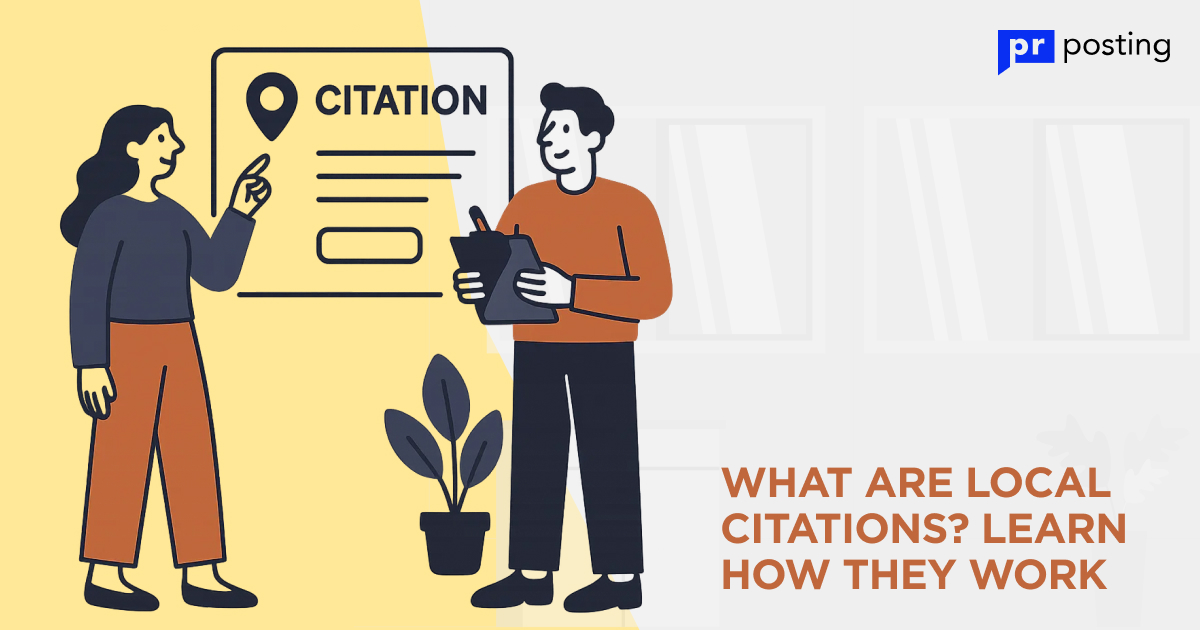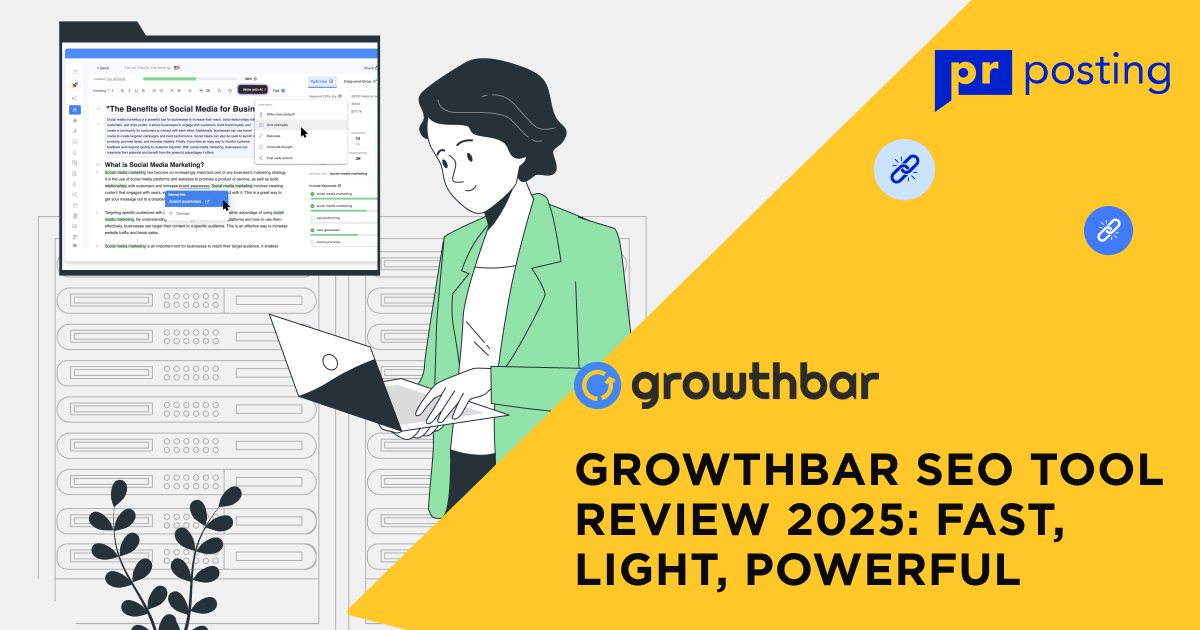What Is Link Velocity and Why Does It Matter for SEO

Link velocity is a sure indication of a site’s growing relevance and worth in its niche. It shows that your content is being found and linked to consistently, a key factor that search engines seek to rank higher.
This article will delve into the intricacy of link velocity, its impact, factors that determine it, and efficient management strategies for optimizing SEO performance.
Link Velocity: Breaking Down the Basics
Before we go further, let’s define what link velocity is and why search engines care so much about it:
What is link velocity?
Think of link velocity as the pulse of your website’s online popularity. It’s about how fast you gain new backlinks and if that speed stays steady, rather than just the overall count of links you’ve gathered.
For example, consistently getting a few good weekly links looks natural and healthy to search engines. But if you suddenly get thousands of links overnight and nothing for months, that looks suspicious.
Link velocity gives search engines a picture of how your site’s reputation grows over time.
Why do search engines favor link velocity?
Search engines, specifically Google, care a great deal about link velocity because it measures how authoritative and relevant your site is. Suppose other good sites are linking to yours repeatedly. In that case, Google interprets this to mean that your content is being found, valued, and used as a resource by others. Ongoing new links mean your site consistently improves and becomes a helpful voice in its niche.
This organic, consistent growth matters. Search engines can recognize whether tricks or “spammy” link-building techniques are used. They like organic, consistent growth that is happening because your content is genuinely good and helpful.
If your link velocity looks organic and consistent, you establish trust with Google, and your site will get higher rankings.
What does a “good” link velocity look like?
There isn’t one “magic number” that defines a suitable link velocity because it’s site-dependent. What’s healthy enough is based on several factors: how competitive your niche is, how old your site is, how established the authority of the existing sites is, and even what your competition does.
Gaining a few strong, consistent monthly links could be excellent for a brand-new website. However, for a large, established company, search engines would expect to see a higher, consistent volume of new links.
The main point is always the same: a “good” link velocity is about consistency and naturalness. It means your link-building campaign is going at a realistic pace because your content genuinely deserves them, not because you’re forcing them.
The Impact of Link Velocity on SEO
Link velocity is not just a technical term. It’s an important metric that directly impacts how search engines view and rank your website. How fast you get new links can directly impact your website’s spot, moving it up in the search rankings and making it a more influential online presence.
Let us discuss its fundamental effects.
Search engine rankings
When search engines notice your website continuously getting new and quality links, they think it is becoming popular and important. This positive signal helps your site move up in search results for relevant keywords.
Simply put, a steady and healthy link velocity helps your website appear higher when people search, making it much easier for them to find you.
Authority and trust
A consistent link velocity plays a massive role in building your website’s overall authority. Consider every quality new backlink to be a vote of approval from another website. Your site’s reputation increases as you accumulate more of these votes in the long run.
This consistent stream of reliable endorsements assists in building a solid foundation of trust with search engines, which is critical to successful SEO over the long term.
Detecting spam and penalties
Conversely, a sudden or unusual influx of fresh links, especially from low-quality or irrelevant sites, is a gigantic red flag to search engines. These sudden inflows are akin to attempts to game the system, also known as “black hat” SEO.
If discovered, it can cause several problems for your site, such as losing your rankings or even being penalized by Google, which can severely impact your site’s visibility.
Organic traffic and user activity
Improved search engine rankings, a direct function of a healthy link velocity, automatically result in a massive boost to organic traffic. This implies more individuals are discovering your site via search engines.
Other than that, quality backlinks from other good sites can also send traffic directly to your site. This “referral traffic” brings you more visitors and exposes you to more people, making your site busier and more engaged.
Factors Influencing Link Velocity
Link velocity is not just a matter of chance. Several key actions and conditions shape it. Knowing them lets you proactively stimulate a good stream of fresh links to your site.
Here’s what determines how quickly your website accumulates quality backlinks.
Content quality and shareability
The best way to acquire good links is to write great content. That includes well-researched articles, original research, engaging infographics, or useful tools others want to use and share.
When your content is helpful, informative, or entertaining, it tends to get backlinks because other sites will want to link to it or pass it on to their visitors. Great content acts like a magnet for links.
Content outreach and promotion
Even great content requires a nudge to be noticed. The key is to share your content proactively across social media, via email newsletters, and in online communities relevant to your domain. The more views your content gets, the better your chances of gaining links.
You can also directly approach website owners, bloggers, or journalists who may be interested in your content. This manual outreach should be personalized, showing them why your content would benefit their readers and their site.
Industry trends and news
Keeping up with current topics of the day in your industry can make a big difference. When you write about topics that address timely news or hot discussions, it is far more likely to get picked up and linked to by news outlets and other important influencers in your field.
If your site regularly provides insightful commentary on current events or new perspectives, you can be the source individuals look to.
Competitor analysis
Examining your competitors’ backlink approach closely can yield valuable information. You can learn what opportunities are available by seeing what type of content they’re receiving links from and where they’re receiving them.
This review allows you to refine your content marketing and keyword promotion strategies in a way that helps you outrank competitors in search results.
Monitoring and Controlling Your Link Velocity
Tracking your link velocity is crucial to maintaining a balanced SEO strategy. By proactively managing the rate you gain links, you can keep your site’s steady state of building authority and visibility in search results.
This is how you track and optimize your link development correctly.
Tools for tracking backlinks
To truly understand your link velocity, you need reliable tools. Google Search Console is a free and must-have tool. It delivers useful insights about links directed towards your website and can assist with detecting any possible problems.
Besides this, other reliable third-party SEO software provides a much more in-depth view of your backlink profile. These applications can provide you with history, the kinds of words used in your links, and even competitor link strategy insights, giving you an overall view of your links.
Strategies for healthy link growth
Building a consistent and positive link velocity comes from smart, ongoing efforts. Here are proven ways to encourage natural link growth:
- Consistent content creation: Regularly publishing high-quality, valuable content is the foundation for getting natural links. When you create great stuff, others will want to link to it.
- Quality guest posting: Writing well-crafted articles for other reputable websites in your field can earn you valuable links. Focus on writing for respected sites, where quality matters more than getting links.
- Broken link building: Find broken links on other websites. If you have relevant content that could replace that broken link, suggest it to the website owner. It’s a win-win. They fix a problem, and you get a link.
- Creation of valuable resources: Develop content that lasts, like detailed how-to guides, templates, or ultimate lists. These “evergreen” resources naturally attract links over a long period because they stay helpful.
- Promotion of existing evergreen content: Don’t just publish your best content and forget it. Keep promoting your high-performing, timeless articles and resources. This ensures they continue to get seen and attract new links over time.
Avoiding unnatural link velocity
Search engines refer to any effort to artificially enhance link velocity through unconventional practices, such as purchasing links, participating in “link farms,” or other underhanded methods, as a “link scheme.” These techniques are fraught with severe risks, such as losing rankings or being slapped with extreme manual penalties by Google.
To build your brand, it is essential to follow ethical SEO guidelines. For long-term SEO success, organically attract links via truly valuable content and establish relationships online.
Practical Applications and Next Steps
Understanding link velocity is just the beginning. Applying this knowledge is what truly boosts your SEO. There are real steps you can take today to enhance your link-building and keep your site growing.
Adding strong visual components to your content can make it much more appealing and frequently linked to by others.
You can use AI design tools to create compelling visuals that capture attention and command desirable backlinks. High-quality, professionally designed flyers are highly shareable on the web and great visual assets that will earn you links.
In addition, creating impressive promotional elements can significantly boost your visibility if you wish to drive traffic by promoting your content with stunning visuals. Attractive posters can be posted anywhere, bringing more traffic to your core content and helping it gain more links.
Keep in mind that controlling link velocity is a long-term process. Be sure to periodically review your backlink profile, observe any shifts in your speed of acquiring links, and modify your plans accordingly. This consistent monitoring, paired with wise choices informed by your history and current industry trends, is the key.
SEO is a marathon, not a sprint. A healthy link velocity comes from consistent effort, high-quality content, and always following ethical practices.
The Power of Link Velocity
Link velocity is an essential aspect of SEO that indicates how naturally your site is developing and gaining prominence online. Search engines appreciate a constant stream of quality backlinks, demonstrating your site’s value.
The ultimate aim is to create a strong, natural link profile that can survive updates in search engine algorithms and stand the test of time. You can do this by regularly developing excellent content and promoting it to garner those precious links.
Knowing and controlling your link velocity can improve your search engine rankings, create healthy authority, and attract more valuable traffic to your site.
More Like This

What Are Curated Links? A Simple Guide for SEO



